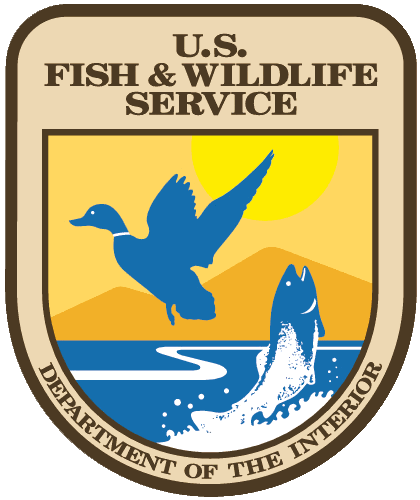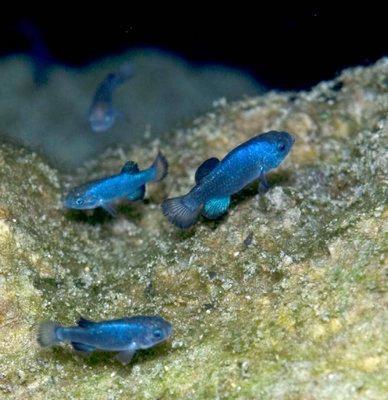Olive Ridley Sea Turtles (Lepidochelys olivacea) by Alma Lopez
 |
| (Olive Ridley Project) |
About
Olive Ridley turtles are
often known as Pacific Ridley Sea turtles. Their name is linked to their olive
green heart-shaped shell. They are considered the smallest, in size, of the
turtle species. The average size of an adult turtle ranges from 2 to 2.5 feet
in length and weighs about 80 to 100 pounds. The females lay an average of 100
to 110 eggs per bundle and usually nest 1 to 3 times per season. The Olive
Ridley turtles are known for their arribada
(meaning “arrival”) behavior. Arribada, or arribazone, is defined as the mass nesting process of the Olive Ridleys.
Geographic
 |
| The light orange is the Olive Ridley Sea Turtle Range (National Geographic) |
They are located in the tropical regions of the Atlantic,
Pacific, and Indians Oceans and can mostly be found in the beaches of Mexico
south of Colombia, eastern India and Sri Lanka; a small amount can also be
found along the West coast of Africa. Although they don’t nest along U.S coast
beaches, they sometimes use the southwestern coast water during feeding
migration.
Populations Changes
The Olive Ridley Sea
turtle is the most abundant sea turtle in the world and its population varies
within various regions. Even though they are considered the most abundant, it
wasn’t until recent years that they suffered from commercial exploitation
reducing their population. In the eastern Pacific, at least 10 million Olive Ridleys
inhabited the seas off of the coast of Mexico until more than 1 million of them
were commercially harvested in 1968. This led to major decline in population for
the Olive Ridleys.
Listing Dates and Types of listing
Dated
listed: July 28, 1978
According to the Recovery Plan for the U.S. Pacific
populations, the Olive Ridley turtles are classified as endangered along the
coast of Mexico and threatened in the rest of the regions in the Pacific.
Causes of Threats and listing
Egg poaching and over-harvesting of the Olive Ridleys in Mexico led to a decline of all but one of the largest turtle nesting populations in the area. An attempt to protect the Olive Ridley sea turtles, the government made egg poaching illegal in most countries in the eastern Pacific coast. However, egg poaching is still a threat as laws are hardly imposed and because egg poaching helps maintain a stable economy. The Olive Ridleys are exploited for food, bone meal, oil, leather, fertilizer, and bait. In the mid-1960s there was a major decline in their population when Mexico started a turtle leather trade with Europe (mainly Italy) and Japan; this was one of the largest over-harvest. Fifteen years following the decline, millions of turtles were victims until the establish trade industry was banned.
Egg poaching and over-harvesting of the Olive Ridleys in Mexico led to a decline of all but one of the largest turtle nesting populations in the area. An attempt to protect the Olive Ridley sea turtles, the government made egg poaching illegal in most countries in the eastern Pacific coast. However, egg poaching is still a threat as laws are hardly imposed and because egg poaching helps maintain a stable economy. The Olive Ridleys are exploited for food, bone meal, oil, leather, fertilizer, and bait. In the mid-1960s there was a major decline in their population when Mexico started a turtle leather trade with Europe (mainly Italy) and Japan; this was one of the largest over-harvest. Fifteen years following the decline, millions of turtles were victims until the establish trade industry was banned.
 |
| Olive Ridley caught in a fishing net (Grind Tv) |
A
Description of Recovery Plan
Date Issued: January 12, 1998
Name of Plan: Recovery Plan for US Pacific Population of the Olive Ridley Turtle (Lepidochelys olivacea)
Name of Plan: Recovery Plan for US Pacific Population of the Olive Ridley Turtle (Lepidochelys olivacea)
Recovery
Criteria: To consider delisting all of
the following must be met:
1) All regional stocks that use
U.S. waters have been identified to source beaches based on reasonable
geographic parameters.
2) Foraging populations are
statistically and significantly increasing at several key foraging grounds within
each stock region.
3) All females estimated to nest
annually (FENA) at "source beaches" are either stable or increasing
for over 10 years.
4) A management plan based on
maintaining sustained populations for turtles is in effect.
5) International agreements are
in place to protect shared stocks.
Actions
Needed: Three major actions are needed
to achieve recovery:
1) Minimize incidental mortalities of turtles by commercial
fishing operations.
2) Support the efforts of Mexico and the countries of
Central America to census and protect nesting Olive Ridleys, their eggs and
nesting beaches.
3)
Identify stock home ranges using DNA analysis.
What can we do?
Even though there is a recovery plan in attempt to save
these vertebrates, as of August 2007 they don’t have a final approved recovery
plan. As we wait for the plan to be finalized there are some actions we can take
to help reduced threats to the Olive Ridleys. The following are a few examples:
 |
| (World Wildlife Fund) |
2. Volunteer/educational programs/Billion Baby Turtles:
http://www.seeturtles.org/olive-ridley-turtles/
3. Reduce our consumption of sea food.
Other Resources
National Geographic: Over 100,000 Sea Turtles Nest at the
Same Time|National Geographic https://youtu.be/tEd_g9RypHE
Ted-Ed|The Survival of the Sea Turtle: website: http://ed.ted.com/lessons/the-survival-of-the-sea-turtle
Youtube: https://youtu.be/t-KmQ6pGxg4
World Wildlife Fund-Entangled Olive Ridley Turtle Cut free
from Debris and Release: https://youtu.be/GfqtYq-lIt4
Work Cited
National Geographic. “Olive Ridley Sea Turtle” National Geographic. National Geographic,
n.d. Web. 16 Nov. 2016 < http://animals.nationalgeographic.com/animals/reptiles/olive-ridley-sea-turtle/>
National Wildlife Federation. “Olive Ridley Sea Turtle” National Wildlife Federation. National
Wildlife Federation. n.d. Web. 28 Nov. 2016. < http://www.nwf.org/wildlife/wildlife-library/amphibians-reptiles-and-fish/sea-turtles/olive-ridley-turtle.aspx>
Olive Ridley Project “Sea Turtles” Olive Ridley Project. Olive Ridley Project . n.d. Wed. 26 Nov
2016. <http://oliveridleyproject.org/sea-turtles/>
Strege, David. "Massive Olive
Ridley Sea Turtle Deaths Reported off India." GrindTV.com. N.p., 26 Feb. 2014. Web. 26 Nov. 2016. <http://www.grindtv.com/wildlife/massive-olive-ridley-sea-turtle-deaths-reported-off-india/#01ye8W8649AsDjt4.97>
U.S Fish & Wildlife Services. “5-yr Review Plan”. U.S Fish & Wildlife Services Services
Ecos. U.S Fish & Wildlife Services. 21 Aug 2007. Online PDF <http://ecos.fws.gov/docs/five_year_review/doc1077.pdf>
U.S Fish & Wildlife Services. “Olive Ridley Sea Turtle
(Lepidochelys olivacea)” U.S Fish &
Wildlife Services North Florida Ecological Services. U.S Fish &
Wildlife Services. Jan 2015 .Web. 26 Nov. 2016. < https://www.fws.gov/northflorida/seaturtles/turtle%20factsheets/olive-ridley-sea-turtle.htm>
U.S Fish & Wildlife Services. “Recovery Plan for US
Pacific Populations of the Olive Ridley” U.S
Fish & Wildlife Services Ecos. U.S Fish & Wildlife Services. 12 Jan
1998. Online Pdf <http://ecos.fws.gov/docs/recovery_plan/981201a.pdf>
World Wildlife Fund. “Olive Ridley Turtle”. World Wildlife Fund. World Wildlife
Fund. n.d. Web 25 Nov. 2016. < http://www.worldwildlife.org/species/olive-ridley-turtle>


















